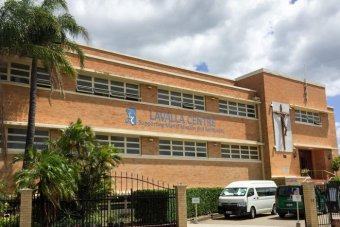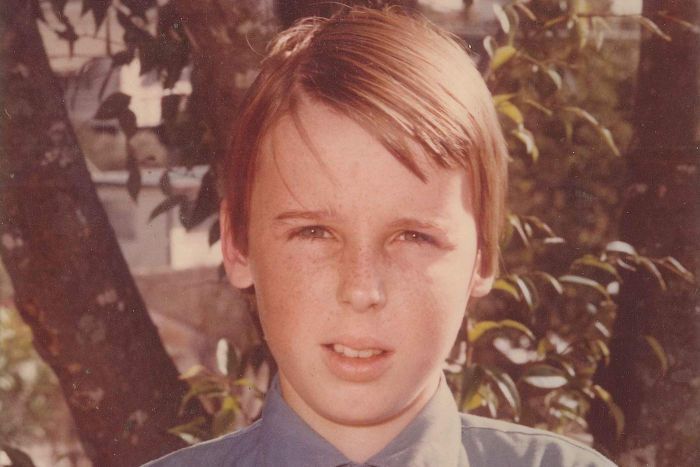Child sex abuse royal commission: I went to Catholic school, but I was one of the lucky ones
Updated
I now consider myself one of the lucky ones.
Perhaps it was simply that I was an extroverted boy and reasonably popular — I could be funny if and when required — and my mother took every opportunity to ask the brothers how I was doing at school. She used to pin them down at "father-son" nights with questions about what subjects I was doing well in and how I could improve.
Having listened to the testimony from the Royal Commission into Institutional Responses to Child Sexual Abuse I realise that I wasn't the sort of boy the paedophiles were ever likely to be interested in: I wasn't vulnerable enough. My mother asked too many questions.
In my 20s and 30s, I used to joke about surviving the full Catholic "catastrophe" (apologies to Zorba): strapped by the Sisters of the Sacred Heart until the age of nine, in 1974 I was handed-over to the Marist Brothers to be socialised and institutionalised through violence.
To anyone under the age of 50 that may seem a strange thing to say, but for men of my generation and older, violence was an everyday part of the Catholic education experience. Being caned was as normal as being ordered to replace the chalk and clean the blackboard dusters.
Many of the brothers were outright sadists. One comes immediately to mind. I well remember being hauled out in front of the other boys in Year 4 and repeatedly caned for submitting a piece of artwork which he had deemed inadequate.
The artwork in question was meant to be a bulldog, made from a discarded cotton spool and two bits of coloured cardboard. I was eight and the brother had determined that I should be made an example of.
There were many of his ilk — Brother Francis, Brother Casmir — grown men who thought nothing of using a leather strap or length of cane on a boy until the child not only cried, but occasionally pleaded in front of his classmates for the punishment to stop.
One had a cane universally known as "Percy Persuader". I am not sure why. Persuasion had nothing to do with it, it was an instrument of punishment, purely and simply. Brother Casmir regularly used a cricket bat — often across the small of a boy's back — and thought nothing of throwing a wooden blackboard duster at a child's head.
When I was about 10, I was unfortunate enough to be chosen for the choir. Brother Harold was the choir master. He was very old and had his own method of musical instruction. He would pace between the lines of boys and, with the flick of a finger, eject those he thought were either not in tune, or, in his estimation, not trying hard enough.
Once he had finished moving through the choir stands he would then proceed to the front of the class, cane all of those who had been ejected and start the whole process again.
Such physical abuse was legal at the time in both public and private schools, and actively pursued by religious orders right up until the early 1980s. Back then, it was seen as "discipline".
And all boys in Catholic schools during that era were expected to be disciplined. If you were caned at school, so the prevailing wisdom went, "you must have done something to deserve it" and consequently "you won't do that again next time, will you?"
It's easy to forget that the call for the reintroduction of corporal punishment in Australian private schools, particularly from political and social conservatives, was commonly heard right up until the mid-1990s. Astonishingly, Queensland and South Australia still have corporal punishment on their statutes, even though it is no longer practiced.
 Photo:
The Brothers House at Marist Brothers College, Rosalie, in Brisbane. (ABC RN: Antony Funnell)
Photo:
The Brothers House at Marist Brothers College, Rosalie, in Brisbane. (ABC RN: Antony Funnell)
Unless you have been conditioned to a system of violence, it is difficult to understand how the participants in that system, no matter how innocent, learn to internalise and normalise its abuses. In Year 4 I was caned once a week — at a conservative estimate.
Sometimes I was punished for my own actions, often I was caned along with other member of the class as a form of group punishment cum deterrence. And yet, I was one of the exemplary students: my marks were good and I was well regarded by my teachers.
In senior, I was made a prefect and a house captain. Those considered "trouble makers" were treated far worse.
It was many years before I started to truly appreciate the full effect that the Catholic education system of the 1970s and early 80s had on my psyche. From the Brothers I retain, and cherish, a sense of what's often called "Catholic social justice": a deeply held belief that what's important in life is to make some form of difference to society, no matter what you do and no matter how small your contribution; that treating everyone as your equal is important; that your goals in life should rise above the simple pursuit of material wealth.
How odd then that I also learned from them how base and brutal and petty human beings can be.
Several weeks ago, the royal commission heard detailed figures on the extent of sexual abuse in Catholic education facilities across Australia: 1,880 alleged perpetrators since the 1950s. Of those, 597 were identified by the commission as religious brothers, with 96 nuns also identified.
Though the figures provided were shocking, they were also inconclusive: the abuse and paedophilia committed under the Catholic cross did not start in the 1950s. One can only imagine what the true figure would be if the commission had been charged with the responsibility of going further back.
And, of course, the summary of abuse presented to the commission was not, even by its authors own estimation, comprehensive. It simply reflected the record of cases where a complaint was made. Where a formal allegation was made. Many victims of abuse, as the Commission itself has acknowledged, have never felt the strength or trust to come forward.
Of the Marist Brothers — the brothers who venerate the Blessed Virgin — the Commission found that 20.4 per cent of those who served in the order in the six decades up until 2009 were alleged perpetrators. One in five.
I have occasionally been asked whether I ever suspected or knew of such abuse. According to the statistical evidence, 29 per cent of all alleged cases occurred in the 1970s, the period during which most of my primary and secondary education took place.
I am not aware of any allegations against any of the brothers who taught at my school. And I am not personally aware that any of my fellow pupils were victimised in such a way.
But to think that there were none beggars belief. In their flowing white religious gowns, with cane always to hand, the Marist Brothers dominated a massive chunk of our young lives.
Authoritarian and cruel. Belligerent and brutal. They charged about like rhinos — white rhinos as it soon transpired — for even by the early 1980s social and cultural change had severely thinned their numbers.
I only remember seeing signs of their vulnerability on one occasion. It was in the late 1970s, when Fred Schepsi's semi-autobiographical film The Devil's Playground was broadcast as the Sunday night movie on commercial television. Back then, in that pre-digital age, the Sunday movie was a shared national event.
Schepsi's film documented the brutal system by which young student brothers were trained at the main Catholic juniorate in Victoria in the 1950s. On the morning after that screening, the Brothers at school seemed more reserved. Many of them had been through that seminary.
I have no real way of knowing what they were thinking or experiencing at the time. But to my youthful eyes they seemed far less confident. Embarrassed, perhaps? Uncomfortable because a part of the brutality that framed their lives had been exposed? And embarrassed, perhaps, because they too might be seen as victims.
Giving evidence during the Commission's latest hearing, Brother Peter Clinch, the leader of the Christian Brothers for the Catholic Church's "Oceania" province, had this to say: "A lot of brothers would have entered so-called juniorate formation. So some would have been as young as 14, and they were uneasy with adult relationships."
When the head of the St John of God order, Brother Timothy Graham, was asked why the abuse by male religious orders was so common, he replied: "There was virtually no assessment of people coming in. I think it was an attitude of numbers over quality. Very poor psychosexual or non-existent psychosexual formation. Very little supervision.
"People were asked to do things they weren't adequately trained for. They weren't supported in what were often very difficult ministries. All of those factors come together to create the catastrophes that happened."
But given the sheer number of abuse cases that occurred right across religious orders, it is surely not the full story.
Just over a year ago, a friend of mine shared a photo on Facebook. In the photo he was with a slightly overweight middle-aged man standing in that detached and slightly uncomfortable way that men of a certain age often stand when having their picture taken: together, yet distant, and quietly determined to be seen that way.
 Photo:
No longer a school, this building was once the main senior school building at Marist Brothers Rosalie. (ABC RN: Antony Funnell)
Photo:
No longer a school, this building was once the main senior school building at Marist Brothers Rosalie. (ABC RN: Antony Funnell)
I recognised the face immediately but I couldn't instantly place a name. This man — this newly rediscovered friend of my friend — was older than us, perhaps by 10 years or more. Maybe not even that.
"Antony Funnell, can you guess who I am standing with, he remembers you?" wrote my old classmate.
And then it dawned on me. The stranger in the photo had been a trainee brother back in 1976 — youthful, enthusiastic and inexperienced in handling a classroom of 30 boys. I had, and have, no bad feelings toward that particular brother. He was one of the better ones. But staring at his middle-aged image, I felt no desire to acknowledge his existence, let alone connect with him.
Later that day another of my old school friends made his feelings crystal clear: "All I remember was that he was a turd!" he posted. "Like all of the brothers!"
I survived my experience of Catholic education in the 1970s and early 80s. I managed to matriculate without ever being hauled off to a private room. But as we now know, many were not so lucky. When I left school, I determined that if I ever had a son, he would not be sent to a boys-only school and never to the brothers. I kept that commitment.
If you or anyone you know needs help:
- Lifeline on 13 11 14
- Kids Helpline on 1800 551 800
- MensLine Australia on 1300 789 978
- Suicide Call Back Service on 1300 659 467
- Beyond Blue on 1300 22 46 36
- Headspace on 1800 650 890
I am one of the lucky ones. Of that I'm now certain.
But I also know that the sort of sexual abuse that occurred in Australian religious schools and institutions didn't come from nowhere. It didn't grow on barren ground. It took hold in systems where violence was not just condoned, but encouraged; in institutions were a sense of fear, born of violence, was considered both normal and beneficial in the interests of instilling discipline.
Many people continue to ask how such industrial-scale sexual abuse could possibly have happened. But to me, that's the wrong question entirely.
The real question is this: how could it have been any different, given the institutionalised violence mandated by the Catholic education system?
Topics: catholic, religion-and-beliefs, community-and-society, royal-commissions, law-crime-and-justice, child-abuse, sexual-offences, brisbane-4000, qld, australia
First posted













